All you need to know about recycled paper
PEFC standard, Ecolabel, FSC... Want to go green? We tell you all about recycled paper, its issues and standards and, as a bonus, we give you some tips on how to adopt a more eco-friendly lifestyle!
An ecological challenge
In France, an average of 150 kg of paper is consumed per year and per person. That is quite a lot. But in the USA the figures are even worse, amounting to 340 kg of paper per year and per person. In India only 4 kg are used, and in Brazil 40 kg. And the pollution caused by transporting the raw materials and the finished product has not even been taken into account... The good news is that solutions do exist. And one in particular: recycled paper!What is recycled paper?
Recycled paper is paper made from at least 50% cellulose fibres obtained from recycled materials: paper, cardboard, unsold newspapers, etc. In order to be reusable, this material is collected, shredded and filtered before being transformed into a paste for the manufacturing of recycled paper.
The remaining 50% is composed of blank paper, additives (products that enhance the effect of others) and colourings to improve the characteristics of the paper. Compared to paper made from wood-based paper pulp, the production of recycled paper saves 100% wood, 80% water and 50% energy. Ingenious, isn't it? And contrary to expectations, this paper is as white as classic paper, is suitable for everyday use (not just as scrap paper!). As a bonus, it also offers good writing comfort. Are you going to make the switch too?
The remaining 50% is composed of blank paper, additives (products that enhance the effect of others) and colourings to improve the characteristics of the paper. Compared to paper made from wood-based paper pulp, the production of recycled paper saves 100% wood, 80% water and 50% energy. Ingenious, isn't it? And contrary to expectations, this paper is as white as classic paper, is suitable for everyday use (not just as scrap paper!). As a bonus, it also offers good writing comfort. Are you going to make the switch too?
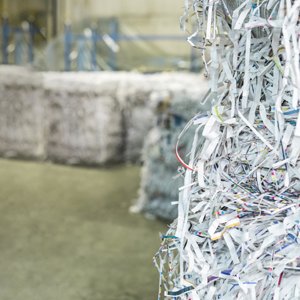
Understanding the norms for recycled paper
"In Europe and in France, there is no deforestation as such due to paper production, because the forest is managed sustainably. It is exploited in a regulated way for various uses: furniture, carpentry, construction, firewood, pulp-based products (hygiene, office paper). It is a matter of thinning, which means that only a certain number of trees are removed from a plot, allowing the other trees to grow stronger," explains Jean-Claude Auffret, head of the paper sector at Bruneau.There are many labels and standards to identify the most environmentally friendly paper, but it is not particularly easy to find your way around them. Allow us to explain everything!
Blue Angel label
Der Blaue Engel is a German label for ecological products created in 1978. It is the oldest environmental label and probably one of the strictest from an ecological point of view. It certifies that the paper is made from 100% recycled fibres. If you want to receive the Blue Angel's blessing for your paper, you have to forget about toxic substances, chlorine gas bleaching, optical brighteners, chemical additives... None of that stuff for the Blue Angel! :)
Der Blaue Engel is a German label for ecological products created in 1978. It is the oldest environmental label and probably one of the strictest from an ecological point of view. It certifies that the paper is made from 100% recycled fibres. If you want to receive the Blue Angel's blessing for your paper, you have to forget about toxic substances, chlorine gas bleaching, optical brighteners, chemical additives... None of that stuff for the Blue Angel! :)

FSC (Forest Stewardship Council)
FSC is an independent organisation that promotes responsible forest management throughout the world. It is a multi-criteria label, with many environmental requirements: maintenance of the forest ecosystem, pollution control, soil protection, etc. The label also includes many social requirements: safe and fair working conditions, protection of local and indigenous communities, etc.
FSC is an independent organisation that promotes responsible forest management throughout the world. It is a multi-criteria label, with many environmental requirements: maintenance of the forest ecosystem, pollution control, soil protection, etc. The label also includes many social requirements: safe and fair working conditions, protection of local and indigenous communities, etc.
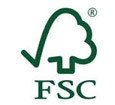
PEFC paper
PEFC certification confirms that the wood used to make the paper comes from sustainably managed forests. PEFC is an independent, non-governmental organisation that offers certification to forest managers if they comply with its recommendations for forest management. Commitments include promoting diversity, choosing periods of intervention so as not to disturb animal reproduction periods, not using GMOs, ensuring a balance between wildlife and forests, respecting the forest area, reforestation, preserving dead trees, etc.
PEFC certification confirms that the wood used to make the paper comes from sustainably managed forests. PEFC is an independent, non-governmental organisation that offers certification to forest managers if they comply with its recommendations for forest management. Commitments include promoting diversity, choosing periods of intervention so as not to disturb animal reproduction periods, not using GMOs, ensuring a balance between wildlife and forests, respecting the forest area, reforestation, preserving dead trees, etc.
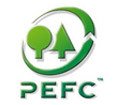
EU Ecolabel
The Ecolabel is a European ecolabel that is only awarded to products with a reduced impact on the environment. The products consist of at least 50% recycled paper or at least 50% fibres from sustainable forestry. Toxic substances and bleaching with chlorine gas are prohibited.
The Ecolabel is a European ecolabel that is only awarded to products with a reduced impact on the environment. The products consist of at least 50% recycled paper or at least 50% fibres from sustainable forestry. Toxic substances and bleaching with chlorine gas are prohibited.
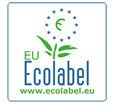
The Origine France Garantie label
This label guarantees that the paper is 100% French and comes from local sustainably managed forests, there are no illegal wood imports, no pulp, 85% of the energy used is green energy produced on site. Good news for nature and for the economy, as the plant also generates 4,500 direct and indirect jobs.
This label guarantees that the paper is 100% French and comes from local sustainably managed forests, there are no illegal wood imports, no pulp, 85% of the energy used is green energy produced on site. Good news for nature and for the economy, as the plant also generates 4,500 direct and indirect jobs.
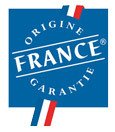
The 3 basic "R" principles
Choosing recycled paper is good, but you still need to adopt the right reflexes on a daily basis, otherwise it's like doing sports and eating fast food... it's useless! Here's a little tip: the 3R's technique!Reduce: don't just print everything, print double-sided... Reuse: reuse envelopes that are only slightly damaged, use half-printed sheets of paper as a draft... Recycle: install special waste bins to allow for the recycling of waste.
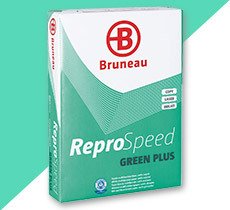
Focus on REPROSPEED paper
Are you looking for a good compromise between ecology and economy? Take a look at the Reprospeed Green Plus range. This Blue Angel certified paper is made from 100% recycled and recyclable material.
Are you looking for a good compromise between ecology and economy? Take a look at the Reprospeed Green Plus range. This Blue Angel certified paper is made from 100% recycled and recyclable material.
This versatile paper can be used with both laser and inkjet printers. Its standard CIE 150 whiteness will enhance your prints. It offers the opacity required for double-sided printing.
We hope this information helps you to see more... green ;-) And don't forget! It's not just paper that is being recycled! Sticky notes, pens, cardboard, envelopes, notepads....There are plenty of products out there to help you adopt an ecological approach.
We hope this information helps you to see more... green ;-) And don't forget! It's not just paper that is being recycled! Sticky notes, pens, cardboard, envelopes, notepads....There are plenty of products out there to help you adopt an ecological approach.